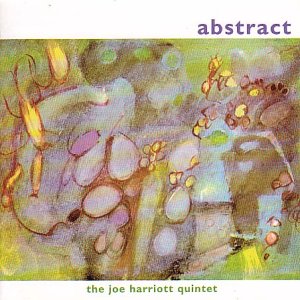
Joe Harriott... one of the lost souls. Came over to England in the 1950's, established a reputation as a fiery alto player in the bebop field. Then evolved his own brand of free improvisation in a radical turnabout, from sometime round 1958 onwards. Something in the zeitgeist... are we allowed to use that word these days by the po mo cops? Yet: his music evolved separately from Ornette Coleman's – which can be born out by a cursory listen, despite what some critics may have said at the time. For one thing, Coleman's music wasn't that well known over here at the end of the fifties... Also - the piano in Harriott's band provides harmonic cues and colourings that did not exist in Coleman's music, in the main. And... this group are not coming off the blues – an integral backbone to Coleman's work. The musicians on 'Abstract,' the second of his 'free form' albums, are Shake Keane – flugelhorn, Pat Smythe – piano and Coleridge Goode and the old junkie traps hero Phil Seamen. Regarding my comments about the role of the piano above, note that Smythe is an integral part of the overall sound, his shimmering impressionist piano embedded in the music – compare and contrast to the sometimes uncomfortable rattling up and down the scales of Mc Coy Tyner in the later, freer Coltrane band.
Harriott expressed a desire to 'paint with sound' and was, apparently an aficionado of abstract art:
"Early in the 1960s, jazz photographer and journalist Val Wilmer discussed with Joe his new concept, which he called abstract music or free form. 'He was quite intellectual. I remember when I went to see him he was talking about Paul Klee, the painter, and Picasso. In fact I had to go home and brush up on my Klee. At the time I couldn't understand why he was comparing his music to abstract painting. Of course, I can now. I did afterwards, but at the time I was too young to appreciate it, I think. He thought of himself as an artist.'" (p. 75) (Quoted in Bill Smith's article here... scroll down...)
He changed direction again later in the Sixties with the pioneering Indo Jazz fusions group – anticipating much of the 'world music' fusions to come. And did it better than most: that music – as neglected as his free form jazz - stands the test of time, despite the many put-downs, from the jazz world especially, by those baffled once already by his earlier experimentation. A prickly character, by all accounts, who did not fit smoothly into the overlapping boys' gangs that constituted much of the modern jazz scene in those times. He died in 1972 – in poverty and neglect.
So: a small celebration of a neglected corner of British Jazz – one that in the overall cultural history yet to be written will seem of much higher importance in later time. (Check out the recent rise in interest in Harriott – epitomised by the mighty Ken Vandemark and his Harriott Project...)
Here's track one and track two from 'Abstract.' 'Subject' is a bouncily jagged theme, with changes of time that settle to a medium/slow walk – emphasised by Seamen's bop hi-hat ticking away throughout.. Overlapping three part improvising from the two horns and piano until Harriott takes a solo, smearing, searing alto, pecking away at phrases until Keane returns to interweave his flugelhorn. Plenty of space when the horns drop out and let the 'rhythm section' carry the music. Smythe also plays some treble pecking notes before the horns re-enter. The drums up the ante, rising through the musical lines to briefly solo. Or does anyone really solo here? Is it rather that the space is defined for rise and fall, ebb and flow for the constituents and that this should be seen rather as a group effort where an individual voice will briefly surface and then subside. This builds subtly on identifiable bop rhythms to take the music to another place...
'Shadows' is different in conception. A succession of introductory phrases by horns and then piano in no fixed rhythm – that cymbal ching ka ching is not evident here. The pulse is closer to what you might here in the American avant garde – later in the sixties when Sunny Murray and co had evolved a new style that went beyond the old swing/four-four of bebop. Again, a group improvisation where individuals will drop in and out to create a shifting pattern that mirrors the overall rhythmic to and fro. A gently lurching...
There is a good overview of Harriott here... in a review of Alan Robertson's biography 'Fire in his Soul'
– (from which I have extracted the title for this piece...).
Joe Harriott Quintet
(Joe Harriott: alto saxophone; Shake Keane: flugelhorn; Pat Smythe: piano; Coleridge Goode: Bass; Phil Seamen: drums).
Download
Subject
Shadows
Buy


3 comments:
This is great. I'm always in favour of 'lost souls' and improvisation. It makes for a good combination. You should get some of your art up here.
Joe Harriot is a completely new name to me - but I like the sound here, the flugelhorn not being your usual jazz instrument. I could imagine this group tackling some modern classical scores ... they should have essayed some Stravinsky. Maybe not having that blues history behind them freed them up to strike out in other directions.
Three of the band were from the West Indies... Goode, Keene and Harriott, but they didn't seem to have that rooting in the blues - Harriott could and did play fiery bluesy solos in conventional line-ups - but it's not part of the overall conception. Joe was a maverick, pure and simple - I saw his band play a couple of times and he was brilliant... the later Indo Jazz Fusions stuff with John Maher is underrated too, although not so much to my taste
Post a Comment